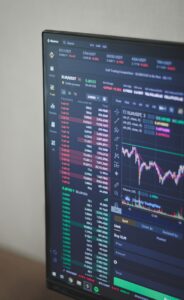Global GDP and Forex Trends: Exploring the Link Between International Trade and Currency Markets
The foreign exchange market, commonly known as forex, is the largest and most liquid financial market in the world. With daily trading volumes exceeding $6 trillion, it plays a crucial role in facilitating international trade and investment. Currency exchange rates, which are determined by a variety of factors, including economic indicators, geopolitical events, and market sentiment, have a significant impact on global trade and economic performance. One such indicator that holds considerable importance for forex traders is the Gross Domestic Product (GDP) of a country.
GDP is a commonly used measure of a country’s economic activity and represents the total value of all goods and services produced within a nation’s borders over a specified period. It serves as a yardstick for comparing and analyzing the economic health and performance of different countries. By examining the relationship between global GDP and forex trends, we can gain insights into the interconnectedness of international trade and currency markets.
One of the key determinants of forex trends is the relative strength or weakness of a country’s economy, as reflected in its GDP growth rate. When a country’s GDP expands at a robust pace, it signals strong economic fundamentals and attracts foreign investors seeking higher returns. This increased demand for the country’s currency leads to an appreciation in its value compared to other currencies. Conversely, if a country’s GDP growth slows down or contracts, it indicates economic weakness, prompting investors to pull out their funds and causing the currency to depreciate.
For example, let’s consider the link between the United States’ GDP and the value of the US dollar. The US economy is the largest in the world, and its GDP growth rate has a significant impact on global financial markets. When the US GDP shows strong growth, it often leads to an appreciation of the US dollar against other major currencies. This appreciation can be attributed to increased investor confidence in the US economy, as higher GDP growth implies business expansion, job creation, and overall economic prosperity. Forex traders closely monitor US GDP data releases and adjust their trading strategies accordingly.
Similarly, the relationship between global GDP and forex trends extends beyond individual countries. In an interconnected global economy, trade flows and economic performance of major economies affect currency exchange rates on a broader scale. When the global GDP is increasing, it typically signifies a healthy expansion in international trade and economic activity. This positive sentiment boosts investor confidence and leads to an appreciation of currencies associated with countries heavily involved in international trade, such as export-oriented economies like Germany or China.
Conversely, during periods of global economic downturns or recessions, forex markets experience heightened volatility. Currency values tend to fluctuate more as investors seek safe-haven assets or currencies perceived as less risky. For instance, during the 2008 financial crisis, the US dollar strengthened significantly against most major currencies due to its status as a safe-haven currency. This strengthening was driven by a flight to safety as investors sought refuge in US Treasury bonds and other dollar-denominated assets.
Furthermore, forex trends can also influence global GDP growth. Exchange rate fluctuations impact a country’s export competitiveness and import costs, which directly affect its trade balance and overall economic performance. A weaker currency can boost exports by making a country’s goods and services more affordable and competitive in international markets. This, in turn, can lead to increased GDP growth, as higher export earnings contribute to economic expansion. On the other hand, a stronger currency can make exports more expensive, reducing competitiveness and potentially slowing down GDP growth.
It is important to note that the relationship between global GDP and forex trends is complex and subject to various factors, including political events, central bank policies, and market sentiment. Additionally, GDP data is not always a perfect predictor of forex trends, as currency markets are influenced by a multitude of factors. Nevertheless, understanding the link between international trade and currency markets can provide forex traders with valuable insights and help them make informed trading decisions.
In conclusion, global GDP and forex trends are closely intertwined. The performance of a country’s economy, as measured by its GDP growth rate, has a significant impact on its currency’s value in the forex market. Moreover, the interconnectedness of international trade and currency markets means that global GDP growth influences forex trends on a broader scale. By keeping a close eye on GDP data releases and analyzing its implications for currency markets, forex traders can enhance their understanding of market dynamics and improve their trading strategies.





